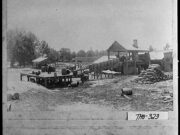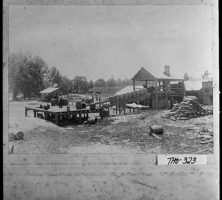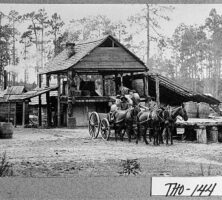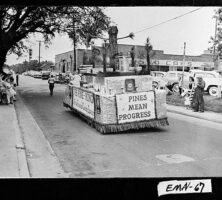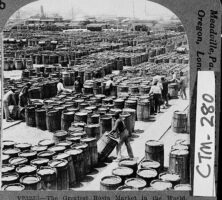In the late nineteenth and early twentieth centuries, Georgia was the world’s leading producer of naval stores, which are materials extracted from southern pine forests and then used in the construction and repair of sailing vessels. Typical naval stores include lumber, railroad ties, rosin, and turpentine.
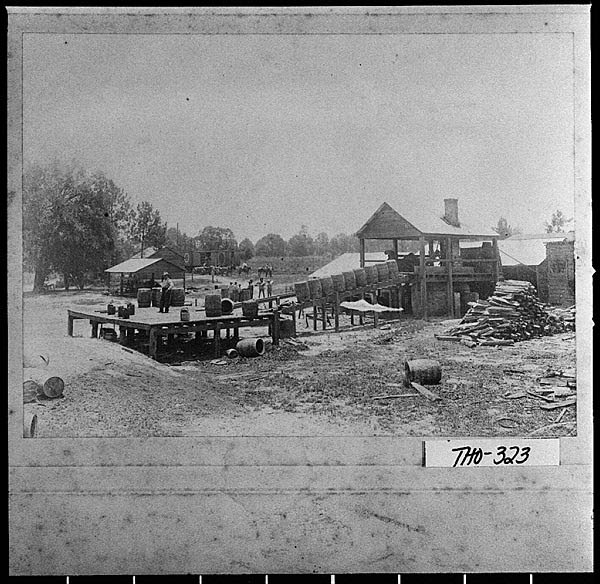
Courtesy of Georgia Archives.
The naval stores industry in North America originated in the mid-eighteenth century in North Carolina. Before 1800 the major products of the trade were raw gum, pitch, and tar. After the American Revolution (1775-83), processes were developed for distilling spirits of turpentine from gum. By 1850, 96 percent of U.S. naval stores came from North Carolina.
In the early 1870s North Carolina naval stores producers began migrating to southeast Georgia’s sandy coastal plain to take advantage of the untapped virgin pine forests in that region. They brought their equipment and Black laborers and established residential villages on large turpentine farms. By the mid-1880s about seven in ten turpentine workers in southeast Georgia had been born in North Carolina.
The industry grew so rapidly that by 1890 Georgia was the national leader in naval stores production, a ranking that lasted until 1905. Florida was the leader from 1905 to 1923, after which Georgia regained its predominance and maintained it until the 1960s.
Reliable labor was important to any successful naval stores operation. At the top of the turpentine farm hierarchy were a superintendent and a woodsrider, who coordinated the work of the laborers who boxed pine trees and chipped and dipped the pine gum. Other workers operated the turpentine distilleries, while coopers made the barrels to transport rosin and turpentine, and teamsters transported the products to the markets. The superintendent and woodsrider were usually white men, while the majority of the laborers, called woodsmen, were African American.
Turpentiners’ work was compartmentalized into a series of seasonal tasks. In the winter, pine trees were boxed, meaning that a triangular cavity, known as a “box,” was cut into each trunk. A typical farm was divided into sections called”crops,” each of which contained about 10,000 boxed trees. With the arrival of warm weather, chippers cut the bark above each box to allow the flow of gum, or resin, into the cavity. In the spring and summer, dippers removed the resin, also known as”dip,” from the box with a trowel-shaped spade. A scrape was also used to remove the hardened gum that had accumulated in the chip above the box.
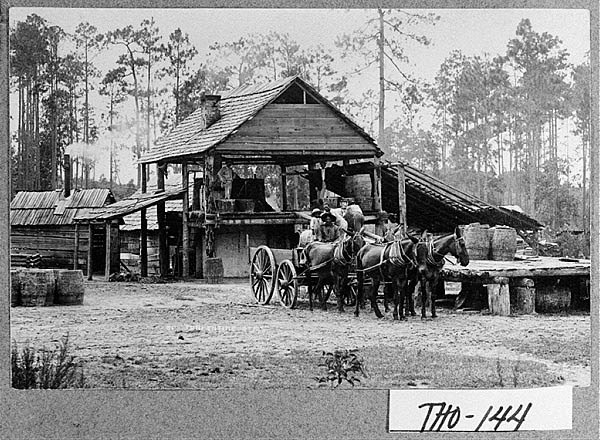
Courtesy of Georgia Archives.
Crude turpentine was distilled throughout the eight-month dipping season. A crop might produce as much as 83,000 pounds of crude turpentine during the first two years of harvesting. Longleaf yellow pine and slash pine produced the highest grade of turpentine. The distillation process began with log fires heating the turpentine still, while the stiller and his crew charged a copper kettle with five to eight barrels of gum. Each barrel of crude dip produced six to seven gallons of spirits of turpentine. The remaining rosin, which formed a hot residue at the bottom of the kettle, drained through a mesh into a vat and was then ladled into barrels. The peak of distilling activity occurred in the summer, when the flow of gum was greatest. Accidental fires at the stills were frequent and often seriously injured the workers.
After two or three years, naval stores crews dismantled their stills, commissaries, and other facilities and moved their laborers and equipment to areas where virgin dip was more plentiful. The growth of the industry attracted increasing numbers of migrants to the Georgia wiregrass and pine barrens. Cutover pine lands available for purchase or lease also attracted new settlers, particularly African Americans, who farmed the lands as tenants or owners. Much of the acreage that had been tapped for turpentine was subsequently cut for timber and then turned over for a third commercial use, agriculture.
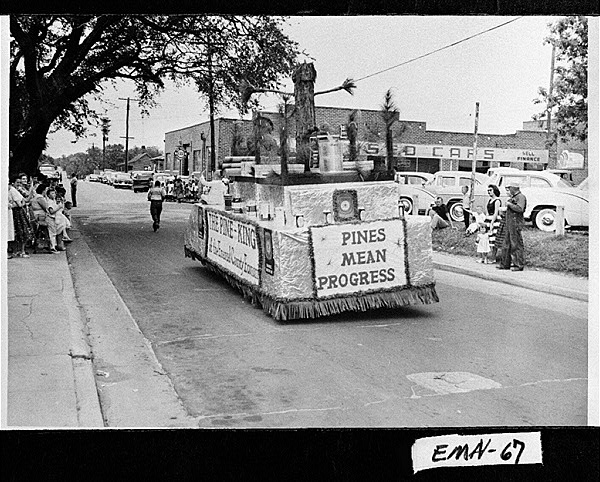
Courtesy of Georgia Archives.
By 1900 the Georgia turpentine industry began to decline as the primitive harvesting methods continued to damage and destroy pine trees. At that time University of Georgia chemist Charles Herty revolutionized turpentine production by designing a clay pot known as the Herty cup, which could be suspended from a nail in the tree. This allowed shallower tree cuts to be made above the cup. Gum dripped into metal gutters tacked to the tree, and then flowed into the cup. The Herty cup-and-gutter system was patented in 1902 and quickly replaced the more primitive box method of resin collection. The turpentine industry saw renewed productivity, and Georgia regained its leading position in the world naval stores market in 1923. From the 1890s through World War II (1941-45), Savannah and Brunswick were the world’s leading ports for the shipment of naval stores.
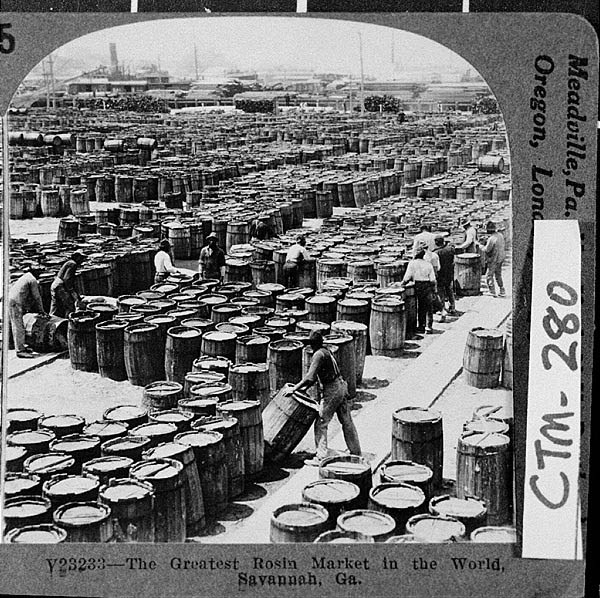
Courtesy of Georgia Archives.
Small-scale production of naval stores declined after 1940 due to rising competition from large chemical companies and the lack of innovation by small producers. New methods introduced in the 1930s modernized turpentine production, primarily through large-scale steam distillation processes and the vapor-condensation process, which produced sulfate turpentine. By the 1960s the small-scale production of naval stores in Georgia was very limited.


